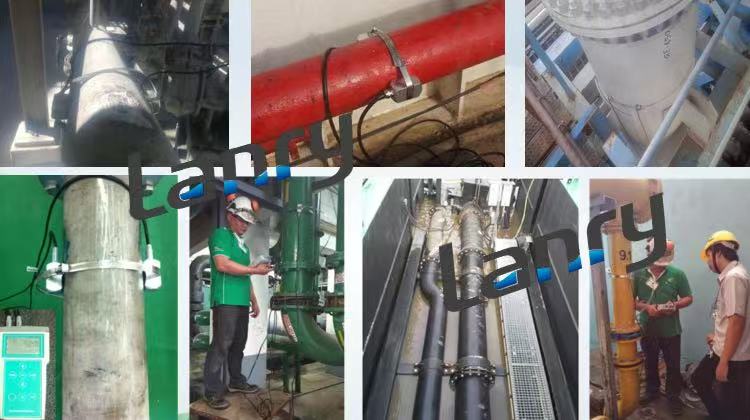1. Introduction
Doppler ultrasonic flowmeters have emerged as crucial devices in the field of fluid measurement, especially in the complex and demanding environment of sewage monitoring. Their unique operating principle enables the measurement of flow rates in various types of sewage, making them an invaluable asset for wastewater treatment plants, environmental monitoring agencies, and industrial facilities dealing with effluent management.
2. Operating Principle of Doppler Ultrasonic Flowmeters
Doppler ultrasonic flowmeters operate based on the Doppler effect. An ultrasonic transducer emits high - frequency sound waves into the flowing sewage. These sound waves bounce off suspended particles or gas bubbles in the sewage. When the particles or bubbles are in motion, the frequency of the reflected sound waves changes. By measuring this frequency shift, the flow velocity of the sewage can be determined. The volumetric flow rate is then calculated by multiplying the velocity by the cross - sectional area of the pipe or channel through which the sewage is flowing.
3. Types of Sewage Suitable for Measurement
3.1 Domestic Sewage
Domestic sewage contains a mixture of organic matter, suspended solids, and microorganisms. Particles such as feces, food waste, and toilet paper are suspended in the liquid. Doppler ultrasonic flowmeters are well - suited for measuring the flow of domestic sewage. The suspended solids in domestic sewage provide sufficient reflecting surfaces for the ultrasonic waves. For example, in municipal sewer systems where domestic sewage from multiple households converges, these flowmeters can accurately measure the flow rate, enabling effective management of wastewater treatment plants.
3.2 Industrial Wastewater with Suspended Solids
Many industries generate wastewater containing suspended solids. For instance, the mining industry produces wastewater with fine particles of minerals, and the paper - making industry discharges effluent with suspended fibers. Doppler ultrasonic flowmeters can measure the flow of such industrial wastewater. The solid particles in these wastewaters reflect the ultrasonic waves, allowing the flowmeter to calculate the flow velocity. In the mining industry, accurate measurement of wastewater flow is essential for proper management of water resources and environmental protection.
3.3 Sewage with Gas Bubbles
Some types of sewage, especially in anaerobic treatment processes, contain gas bubbles. For example, in the sludge digestion tanks of wastewater treatment plants, methane and carbon dioxide bubbles are produced. Doppler ultrasonic flowmeters can also measure the flow of sewage with gas bubbles. The gas bubbles act as reflectors of the ultrasonic waves, enabling the measurement of flow velocity. This is crucial for monitoring the performance of anaerobic treatment processes and ensuring the efficient operation of wastewater treatment plants.
3.4 Particulate - Laden Effluents from Food Processing
Food processing plants generate effluents with various types of particulate matter, such as pieces of fruits, vegetables, and meat. The suspended particles in these effluents can be detected by Doppler ultrasonic flowmeters. Measuring the flow of such effluents helps food processing plants comply with environmental regulations and optimize their wastewater treatment processes.
4. Limitations and Considerations
Although Doppler ultrasonic flowmeters are effective for measuring many types of sewage, there are some limitations. They require a certain concentration of suspended particles or gas bubbles for accurate measurement. In low - turbidity sewage with very few reflecting objects, the measurement accuracy may be compromised. Additionally, the presence of large, irregularly shaped objects in the sewage may cause signal interference and affect the measurement results.
5. Conclusion
Doppler ultrasonic flowmeters are versatile instruments capable of measuring a wide range of sewage types, including domestic sewage, industrial wastewater with suspended solids, sewage with gas bubbles, and particulate - laden effluents from food processing. By understanding their operating principle and limitations, engineers and operators can select and use these flowmeters effectively to ensure the proper management and treatment of sewage, contributing to environmental protection and sustainable development.

Post time: Apr-08-2025

